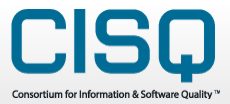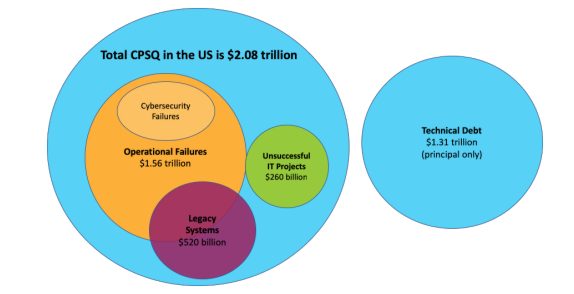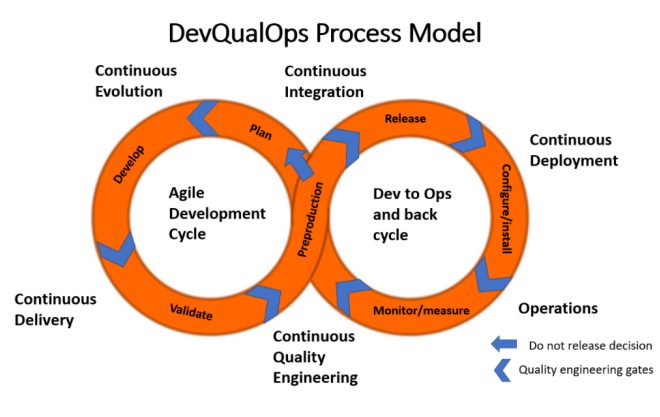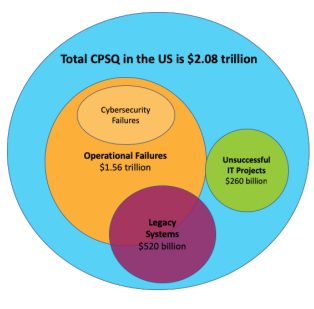| The Cost of Bad, Insecure, Outdated and Unsuccessful Software |
| Written by Sue Gee |
| Wednesday, 20 January 2021 |
|
Operational software failures, poor quality legacy systems, and unsuccessful IT projects cost the United States This staggering statistic comes from the Consortium for Information & Software Quality (CISQ) an IT industry leadership group that develops standards for automating software quality measurement in its newly published research: The Cost of Poor Software Quality in the US: A 2020 Report. The report, which was sponsored by Synopsys, OverOps, and Undo, had as its lead author retired Professor of Software Engineering at the University of Texas at Austin, Herb Krasner, who is a member of the CISQ Advisory Board. The exercise aggregated publicly available source material to estimate the impact of poor software quality on the United States economy. 2020 of course presented an extreme challenge as many businesses and organizations were forced to move operations online at an unprecedented pace, a situation that is acknowledged by the report: This report was developed during especially turbulent times with the world battling a global pandemic. Yet, software continues to grow, proliferate, and enhance our digitally-enabled lives. As organizations undertake major digital transformations, software-based innovation and development rapidly expands. The result is a balancing act trying to deliver value at high speed without sacrificing quality. On the basis of detailed calculations presented in the report CISQ concluded that for 2020 the total Cost of Poor Software Quality (CPSQ) in the US was $2.08 trillion, which far exceeds the total wage bill for all software developers/IT workers in the US which the report estimates at $1.4 trillion. The same methodology had been used in CISQ's 2018 report, enabling trends to be identified. CPSQ in 2020 was made up of three main components: • $260 billion due to unsuccessful projects (up from $177.5 billion in 2018) • $520 billion due to legacy system problems (down from $635 billion in 2018) • $1.56 trillion due to software failures in operational systems (way up from $1.275 trillion in 2018) The total of $2.08 trillion does not include software technical debt, i.e. the future cost of dealing with severe defects that will need to be corrected. For 2020 the figure is $1.31 trillion, a 14% increase on 2018. The report draws attention to the acute shortage of software developers in the US and globally: There are simply not enough good software developers around to create all the new and modified software that users need. Given the indirect as well as the direct contribution of software to the economic base of most industrialized countries, and considering the ways in which software can amplify the powers of the individual/teams/organizations, we cannot allow this situation to continue. Just two percent of the worldwide population knows how to develop software, and the need is estimated to grow by 24% over the next seven years. There aren’t enough educational programs available around the world to keep pace with the need. According to software.org, the number of jobs created directly by the US software industry increased 7.3% over 2016-2018, including a total of 14.4 million jobs (including indirect and induced impacts) and 3.1 million direct jobs, thus creating a Total Value-Added impact to the US GDP of $1.6 trillion (including indirect and induced impacts). The US Bureau of Labor Statistics (BLS) ranks IT-related employment as a field that is growing “much faster than average” and that software developers can expect to see ongoing robust growth through 2028. The BLS estimates that US software developer jobs will grow at a rate of 22% over the next decade. While the statistics are bleak, CISQ does come up with an approach to reducing g CPSQ by finding and fix problems and deficiencies as close to the source as possible, or even preventing them from happening in the first place by way of the concept of DevQualOps, an elaboration of the Agile+DevOps lifecycle in which the emphasis is on quality. A “start, define, measure, manage” approach enables the organization to break free from “anything-goes” approaches to quality and starts the journey towards DevQualOps maturity. The ability to measure quality is the ultimate test for gauging how well quality investments are benefiting the business and its customers.
More InformationContinuous Delivery Insights 2020 Related ArticlesOld and Bad Code Waste Billions Survey Finds Quality Wins Over Speed The Cost And Risk Of Code Deployments Never Mind The Code Quality ... Happy Developers Think More About Security To be informed about new articles on I Programmer, sign up for our weekly newsletter, subscribe to the RSS feed and follow us on Twitter, Facebook or Linkedin.
Comments
or email your comment to: comments@i-programmer.info
|
| Last Updated ( Wednesday, 20 January 2021 ) |






